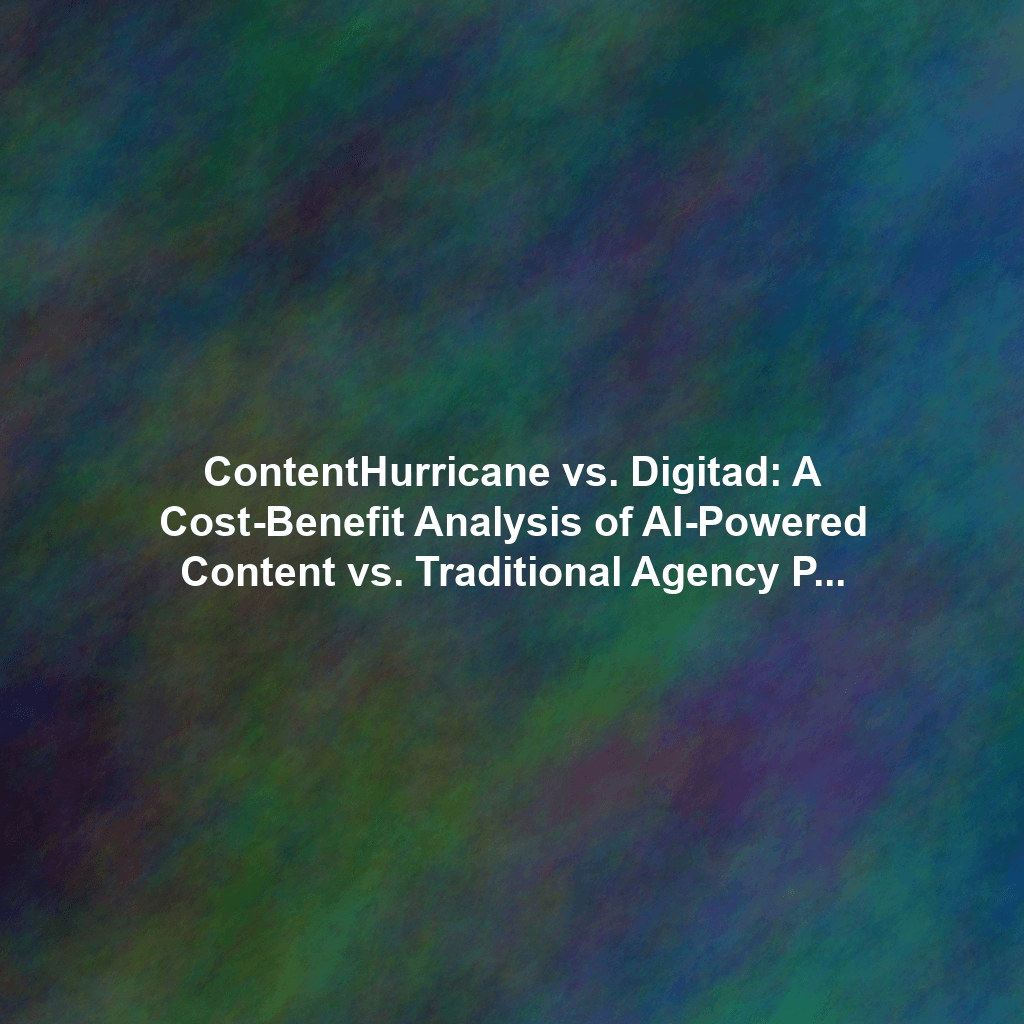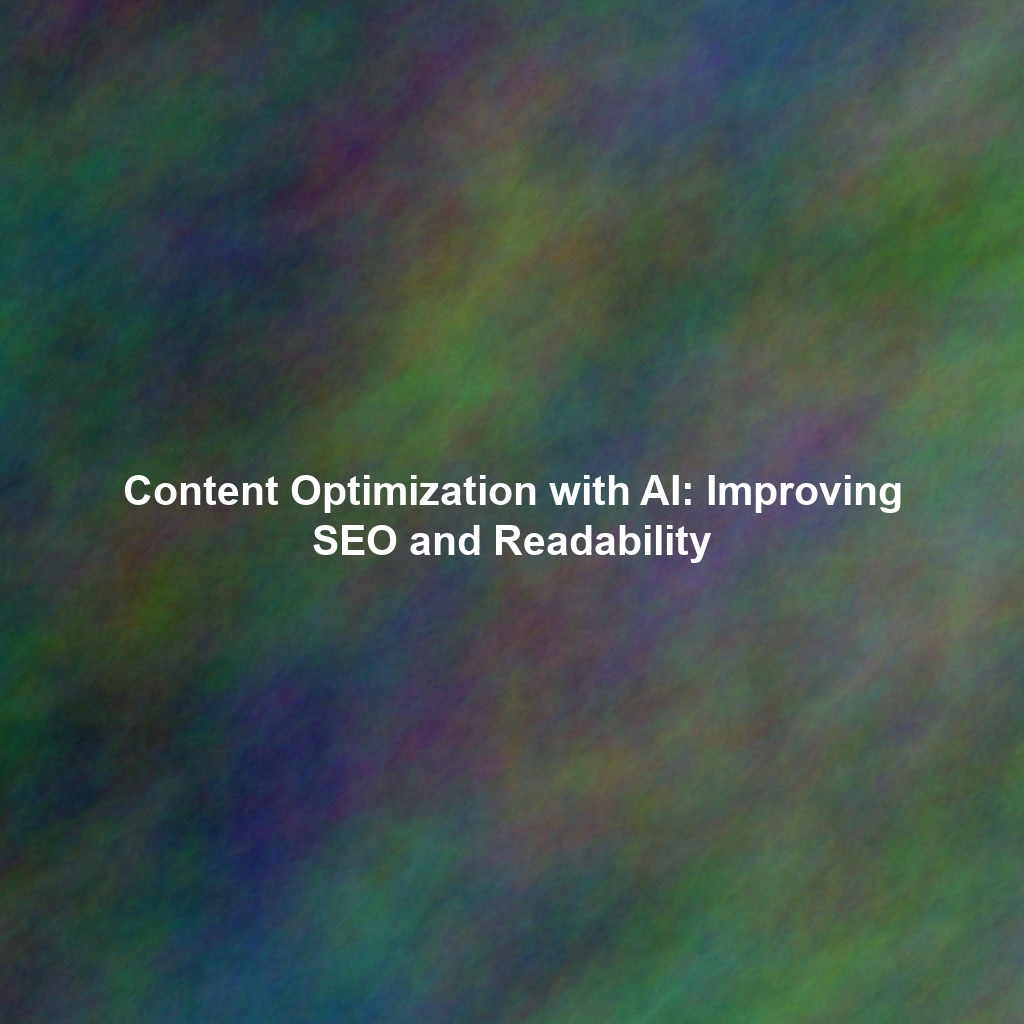Understanding the Landscape: AI-Powered Content Generation vs. Traditional Agencies
Let’s first define our contenders. ContentHurricane leverages the power of artificial intelligence to automate content creation. This typically involves inputting keywords, outlines, or specific instructions, and the AI generates articles, blog posts, website copy, and more. The key advantage here is speed and scalability. On the other hand, Digitad represents a traditional marketing agency offering a comprehensive suite of services, including content creation, strategy development, SEO, and social media management. Their approach relies on human writers, editors, and project managers, offering a more personalized and often bespoke service.
The Core Differences: A Quick Overview
- ContentHurricane (AI-Powered): Focuses on automation, speed, and scalability. Ideal for generating large volumes of content quickly and efficiently.
- Digitad (Traditional Agency): Emphasizes personalized service, strategic content planning, and human creativity. Suitable for complex content projects and brands seeking a highly customized approach.
Decoding the Pricing Structures: A Detailed Breakdown
The most significant difference between ContentHurricane and Digitad often lies in their pricing models. Understanding these models is crucial to accurately assessing the cost-effectiveness of each option.
ContentHurricane’s Pricing: Scalability and Predictability
ContentHurricane typically offers subscription-based pricing. This means you pay a fixed monthly or annual fee for a specific number of content credits, words, or projects. Some platforms also offer pay-as-you-go options. Here’s a breakdown of what to expect:
- Subscription Tiers: Usually range from basic plans for small businesses to enterprise-level plans for large organizations. Prices vary based on the number of words, articles, or projects included.
- Cost Per Word/Article: This is a key metric to compare. The cost per word or article generated by AI is typically significantly lower than hiring a human writer.
- Revision Limits: Some plans offer limited revisions, while others provide unlimited revisions. Understanding this is crucial to managing costs effectively.
- Hidden Costs: While AI is inherently cheaper, be mindful of the need for human editing to ensure quality, accuracy, and brand voice. Factor in time spent reviewing and polishing the AI-generated content.
Digitad’s Pricing: Customization and Expertise
Traditional agencies like Digitad generally employ project-based or hourly pricing models. This means the cost depends on the complexity of the project, the expertise of the team involved, and the time required to complete the work.
- Project-Based Pricing: A fixed price is agreed upon for a specific project, such as creating a website’s content or developing a series of blog posts. This provides cost certainty but requires a well-defined scope.
- Hourly Pricing: Agencies bill based on the number of hours spent on a project. This is common for ongoing content marketing services or when the project scope is unclear.
- Retainer Fees: A monthly fee is paid for ongoing content creation and marketing services. This ensures dedicated resources and a consistent content flow.
- Hidden Costs: Agency pricing often includes project management fees, strategy development costs, and potential revision fees. Be sure to clarify all potential costs upfront.
Cost-Benefit Analysis: Head-to-Head Comparison
To determine the most cost-effective option, let’s consider a hypothetical scenario. Imagine you need to create 10 blog posts per month, each approximately 1000 words long.
Scenario: 10 Blog Posts Per Month (10,000 Words)
ContentHurricane:
- Assuming a mid-tier subscription plan costs $500 per month and includes 20,000 words.
- Cost per word: $0.025
- Total cost for 10,000 words: $250
- Estimated time for human editing: 20 hours (assuming 2 hours per blog post)
- Total Cost (Including editing time at $50/hour for a freelance editor): $250 + (20 * $50) = $1250
Digitad:
- Assuming a project-based price of $500 per blog post.
- Total cost for 10 blog posts: $500 * 10 = $5000
Analysis: In this scenario, using ContentHurricane appears significantly cheaper, even when factoring in the cost of human editing. However, this is a simplified example. The actual cost-effectiveness depends on factors like content quality, revision needs, and the value of the agency’s strategic input.
Beyond the Numbers: Intangible Benefits and Drawbacks
While cost is a major factor, it’s crucial to consider the intangible benefits and drawbacks of each approach.
ContentHurricane:
- Pros: Speed, scalability, affordability, ability to generate content 24/7.
- Cons: Requires human editing for quality control, may lack creativity and originality, potential for generic or repetitive content, requires precise prompts and instructions.
Digitad:
- Pros: High-quality content, strategic content planning, personalized service, brand voice consistency, SEO expertise, dedicated project management.
- Cons: Higher cost, slower turnaround time, requires close collaboration and communication, may not be suitable for large-scale content needs.
Making the Right Choice: Aligning Content Strategy with Budget
Ultimately, the best choice between ContentHurricane and Digitad depends on your specific content needs, budget, and strategic goals. Consider the following questions:
- What is your content volume requirement? If you need a large volume of content quickly, AI-powered generation may be the better option.
- What is your budget? If you have a limited budget, AI-powered content can be a more affordable solution.
- What is the complexity of your content? For highly technical or specialized content, a traditional agency may be necessary.
- How much time do you have for editing and review? If you don’t have time to edit AI-generated content, a traditional agency may be a better choice.
- What is the importance of brand voice and originality? If maintaining a consistent brand voice and creating original content is crucial, a traditional agency can provide more tailored solutions.
Conclusion: A Balanced Approach to Content Creation
The choice between ContentHurricane and Digitad isn’t necessarily an either/or decision. Many businesses find success by combining both approaches. Use AI-powered content generation for high-volume, low-complexity content, and leverage a traditional agency for strategic content planning, specialized content creation, and brand voice management. By understanding the strengths and weaknesses of each approach, you can develop a content strategy that maximizes ROI and achieves your business goals. In today’s dynamic digital world, a blended approach often offers the best of both worlds, allowing you to create impactful content efficiently and effectively.
 Skip to content
Skip to content

